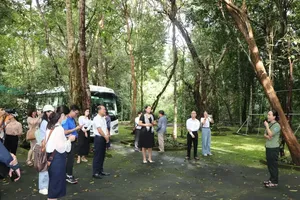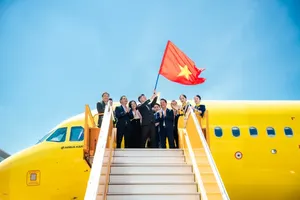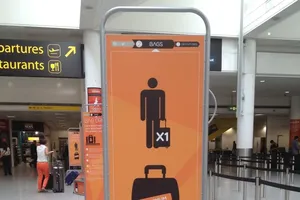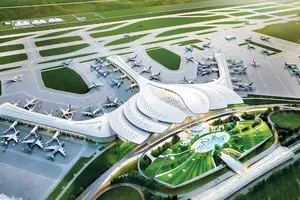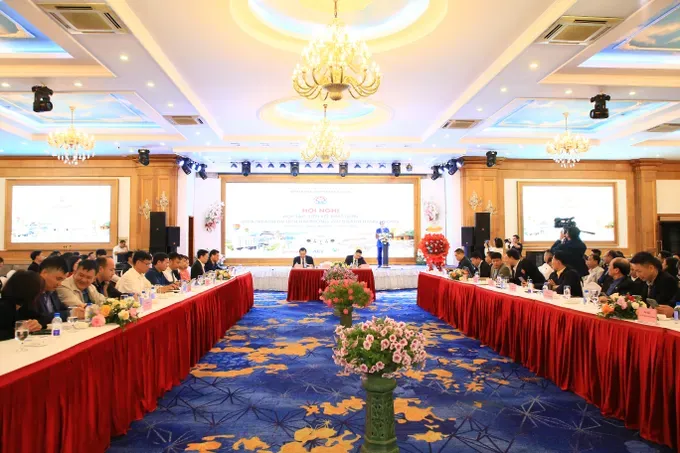
At the conference, organizers provided updates on investment, upgrades, and operations at Cat Bi International Airport; discussed the demand for new flight routes to Hai Phong and the challenges encountered during implementation; and proposed solutions and policies to support airlines in launching new routes to the city. The discussions also focused on connecting with tourism businesses and neighboring localities to develop attractive travel products aimed at drawing more tourists via air travel.
Mr. Nguyen Minh Hung, Vice Chairman of the Hai Phong City People’s Committee, emphasized that tourism is a comprehensive economic sector with high intersectoral, regional, and social integration. He noted that tourism development should not be confined to a single province or region but extend beyond local, regional, and even national boundaries. Therefore, fostering cooperative development in tourism is an inevitable and overarching trend.
Among transportation options, air travel remains the top choice for tourists due to its speed and convenience in reaching distant destinations. However, this mode of transport faces several challenges, including rising operational costs and higher ticket prices during peak summer seasons and holidays, which undermine the competitiveness of destinations and pose difficulties for localities and tourism businesses. Additionally, frequent flight delays and cancellations have become a pressing issue, affecting the overall quality of tour experiences.
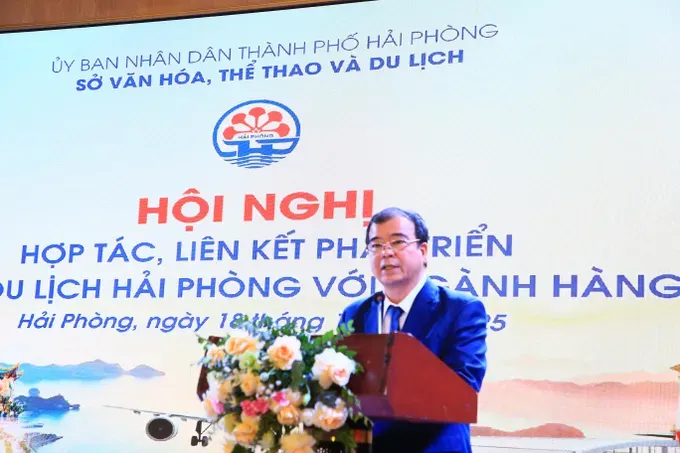
According to Vice Chairman of the Hai Phong City People’s Committee, Nguyen Minh Hung, Hai Phong is a city with a well-developed transportation infrastructure, encompassing five modes of transport: road, inland waterway, rail, maritime, and air. Among these, Cat Bi International Airport is a key airport in northern Vietnam, meeting the 4E airport standard and fully equipped to accommodate large aircraft.
Hai Phong city leaders affirmed their commitment to creating the most favorable conditions for businesses and partners in the aviation and tourism sectors to thrive. They also pledged to continue refining policies and investing in the development and upgrading of destinations to provide increasingly professional and high-quality services for visitors.
General Director of the Vietnam National Authority of Tourism (VNAT), Nguyen Trung Khanh stated that the conference clearly identified the potential and development direction of Hai Phong’s tourism, a diverse ecosystem with abundant opportunities, leveraging its strengths in islands, resorts, and UNESCO-recognized natural and cultural heritage sites.
The conference also underscored the importance of synchronized transportation infrastructure, particularly Cat Bi International Airport, whose domestic and international flight routes have been and will continue to be effectively utilized.
The close collaboration between the tourism and aviation sectors will create new opportunities for Hai Phong, contributing to Vietnam’s goal of welcoming 25 million international visitors by 2025 and reinforcing its position as a safe, friendly, and attractive destination on both the regional and global tourism map,” Director General of the Vietnam National Authority of Tourism (VNAT), Nguyen Trung Khanh, added.

Cat Bi International Airport is located in Hai An Ward, Hai Phong City, approximately 7 kilometers from the city center, 25 kilometers from Do Son, and 50 kilometers from Cat Ba. The airport also offers convenient transportation links to Ha Long and Quang Ninh via the expressway network connecting to the capital, Hanoi.
Cat Bi International Airport meets the ICAO 4E airport standard. Since 2022, it has been selected by the Airports Corporation of Vietnam (ACV) as a leading international airport in the development of science and technology, innovation, and digital transformation. The airport has integrated ACV’s iCute software system, allowing the consolidation of airlines’ check-in systems for flexible operation of check-in counters at the terminal.
Since July 15, 2025, Cat Bi International Airport has implemented full-process biometric technology, allowing passengers to complete boarding procedures through facial recognition without presenting identification documents. In the near future, the airport will install an AI-powered security camera system throughout the terminal and aircraft apron areas. This system uses artificial intelligence to automatically detect abnormal behaviors, alert potential security and safety risks, and monitor vehicles, equipment, passengers, and luggage, while enhancing management capacity, mitigating risks, and ensuring continuous and efficient airport operations.


